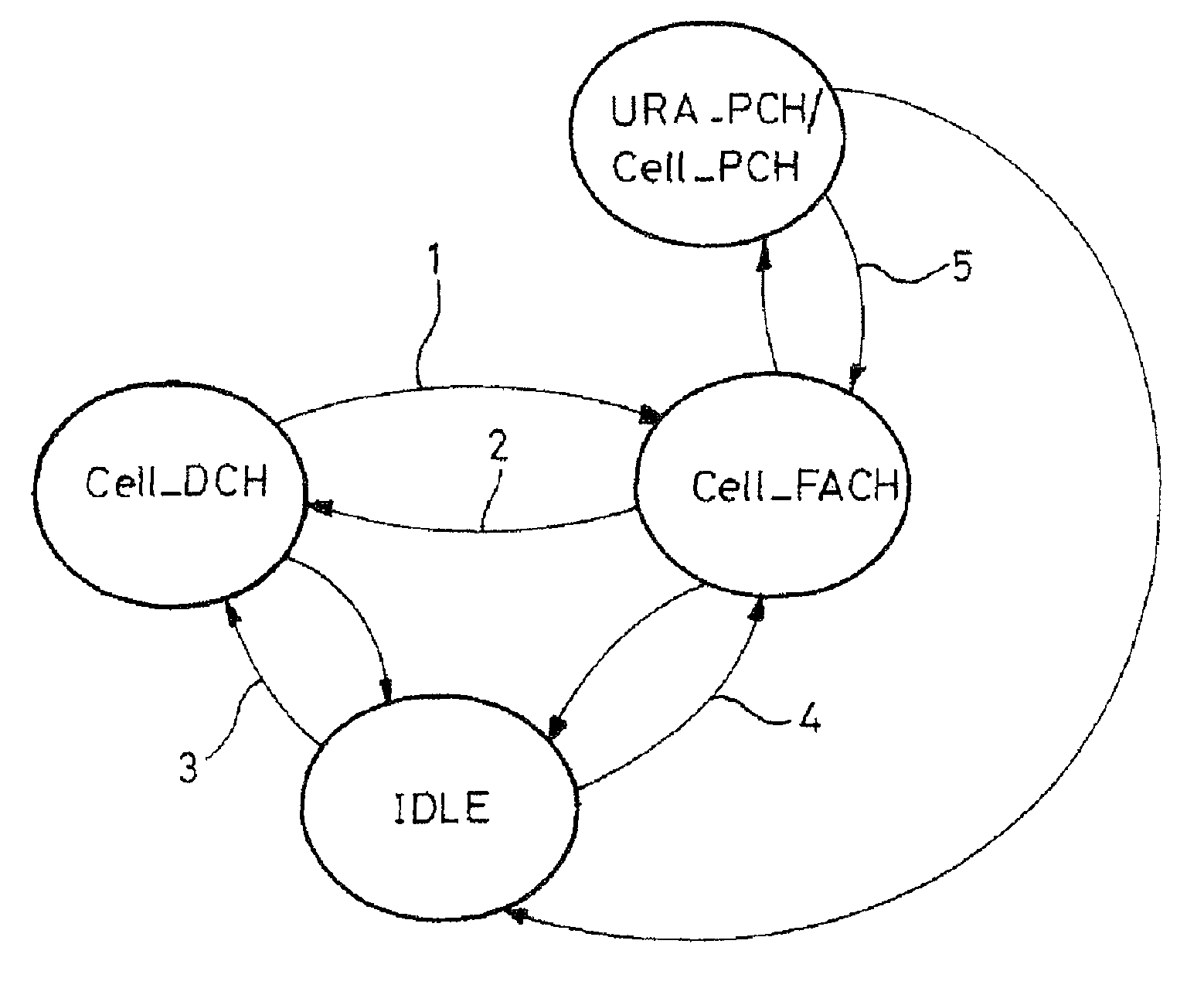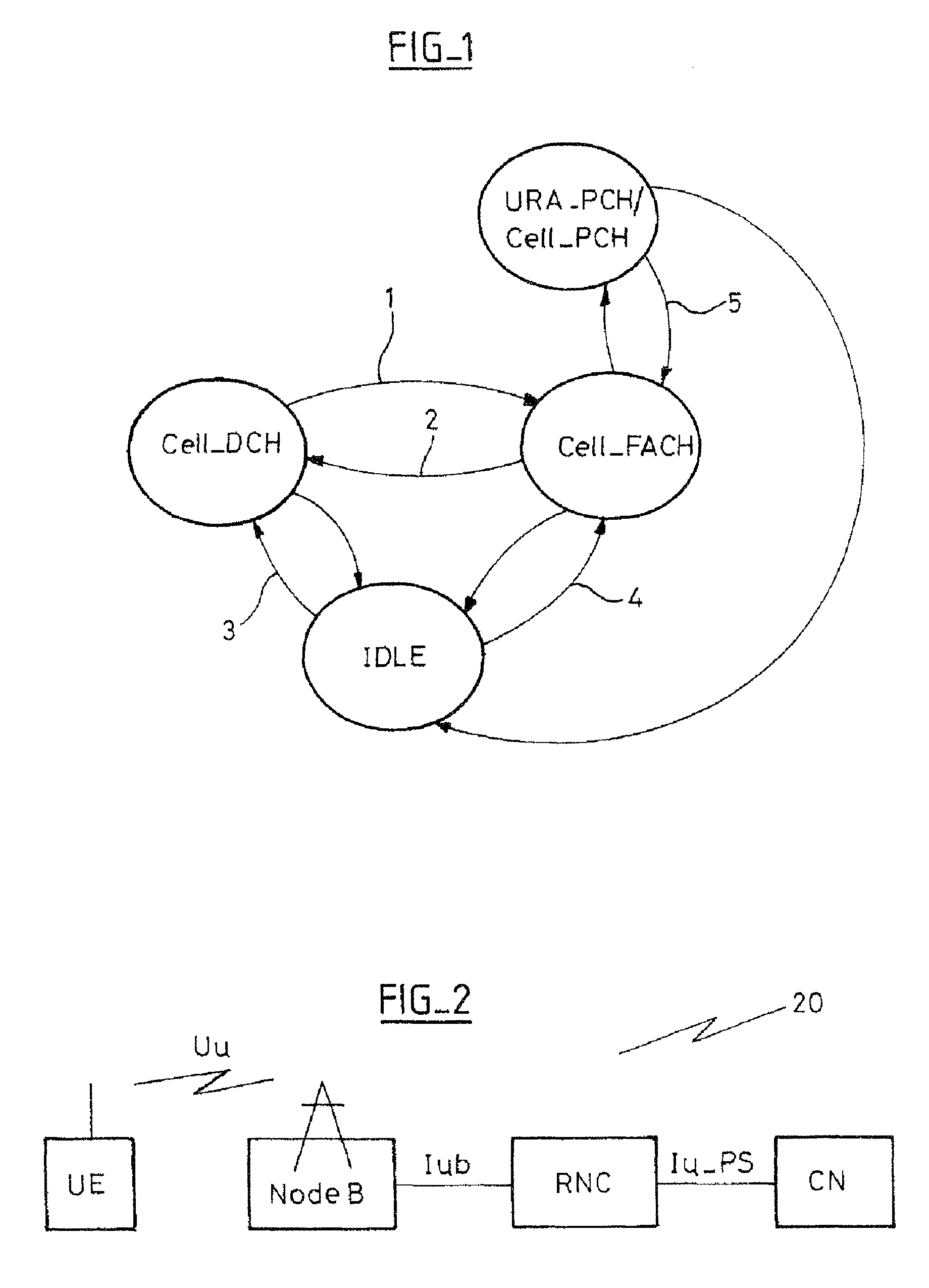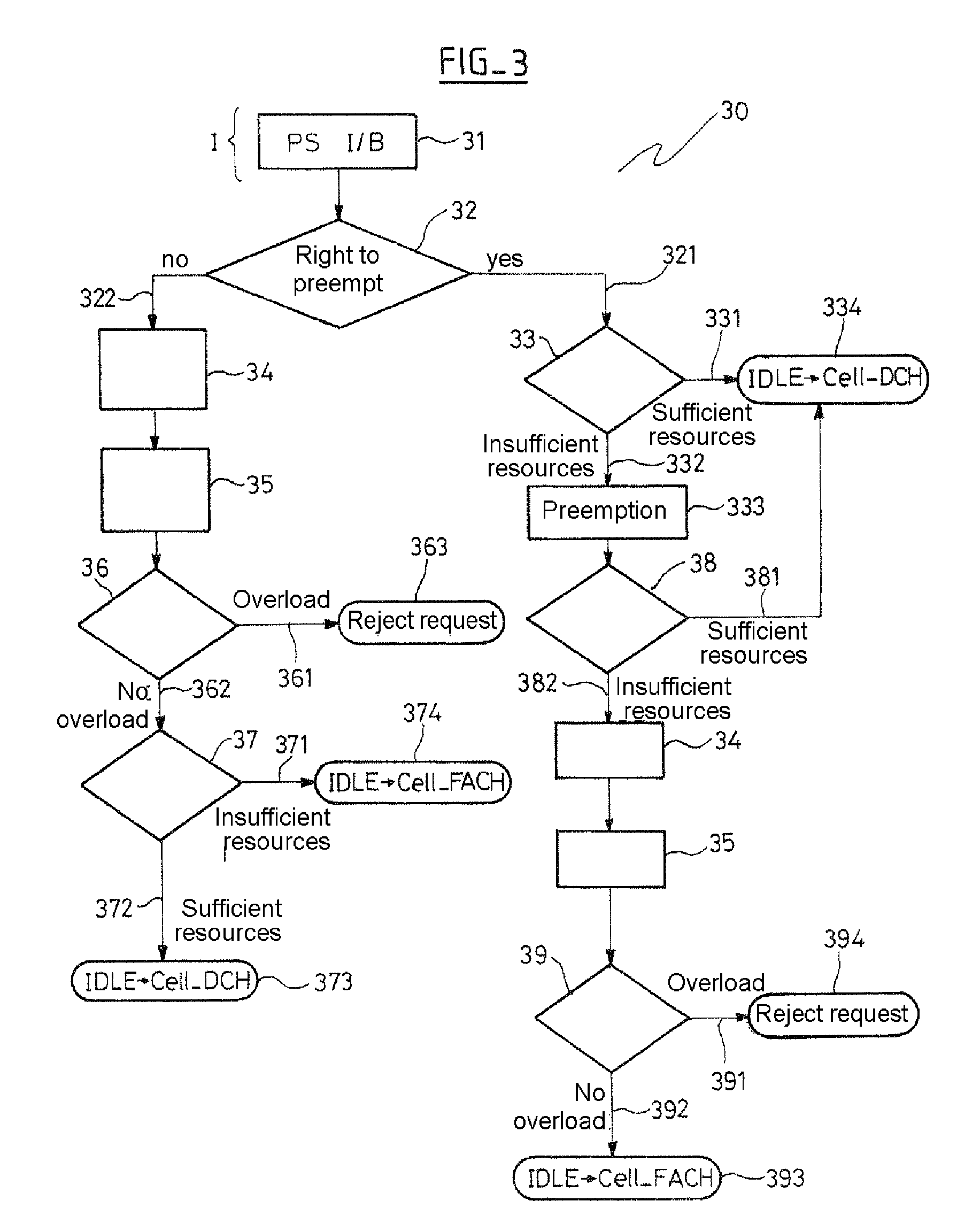Method and device for management of an overload in a cell of a radio communication network, corresponding uses, computer program and storage means
a radio communication network and cell technology, applied in the field of communication networks, can solve the problems of unsuitable admission algorithms, low bit rate and low service quality of known techniques, and inability to adapt to the situation of overloading the cell_fach state, and achieve the effect of minimizing the waiting time in the cell_fach state and being simple to implement and efficien
- Summary
- Abstract
- Description
- Claims
- Application Information
AI Technical Summary
Benefits of technology
Problems solved by technology
Method used
Image
Examples
first embodiment
[0098]There is described next, with reference to FIG. 3, the successive chaining of the various steps of the method 30 according to the invention for a first embodiment in which a user equipment in a given cell is in an IDLE state before sending the RAB request.
[0099]An identification phase 1 comprises a first step 31 during which the radio network controller RNC determines the class of service of the RAB request, with the result that, in the case of an interactive / background PS service, the next step is a step 32; on the other hand, if the service is not an interactive / background PS service, the standard call set-up procedure is executed, i.e. the mechanism according to the invention of detecting an overload in a cell, as described hereinafter, is not involved.
[0100]During the step 32, the radio network controller RNC verifies the rights associated with the user equipment UE. If a preemption capacity associated with the user equipment UE is detected (321), the next step is a step 3...
second embodiment
[0112]There is described next, with reference to FIG. 4, the successive chaining of the various steps of the method 40 according to the invention in which a user equipment in a given cell is in a URA_PCH / CELL_PCH state before sending the RAB request.
[0113]An identification phase 11 comprises a first step 41 during which the radio network controller RNC determines the class of service of the RAB request so that in the presence of “interactive” or “background” classes of service the next step is a step 42; on the other hand, in the presence of another type of class of service (for example “streaming”) the request is rejected, i.e. the user equipment remains in the URA_PCH / CELL_PCH state.
[0114]During the step 42 (which is identical to the step 34), there is determined an immediate success rate RiT equal to the ratio between the number of successful transitions and a number of transitions attempted during a current period T.
[0115]Then, during the step 43 (which is identical to the step ...
PUM
 Login to View More
Login to View More Abstract
Description
Claims
Application Information
 Login to View More
Login to View More - R&D
- Intellectual Property
- Life Sciences
- Materials
- Tech Scout
- Unparalleled Data Quality
- Higher Quality Content
- 60% Fewer Hallucinations
Browse by: Latest US Patents, China's latest patents, Technical Efficacy Thesaurus, Application Domain, Technology Topic, Popular Technical Reports.
© 2025 PatSnap. All rights reserved.Legal|Privacy policy|Modern Slavery Act Transparency Statement|Sitemap|About US| Contact US: help@patsnap.com



